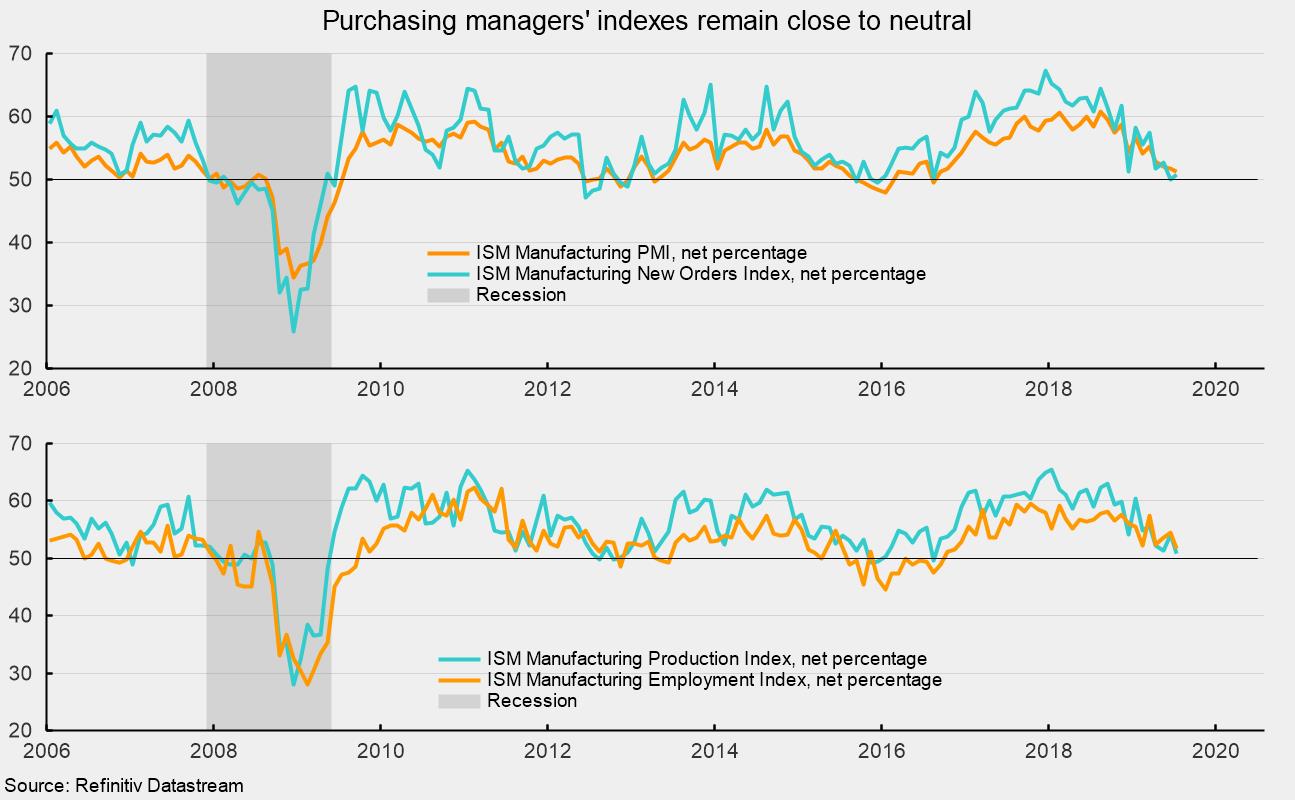Manufacturing Weakness Continued in July
The Manufacturing Purchasing Managers Index from the Institute for Supply Management registered a 51.2 percent reading in July, down 0.5 points from 51.7 in June. July was the fourth-straight monthly decline and the lowest reading since September 2016 (see top chart). July was the 35th month in a row above the neutral 50 level and the 123rd above the 42.9 percent threshold consistent with expansion in the overall economy. The report suggests continued, albeit slow, growth.
Among the key components of the Purchasing Managers Index, the New Orders Index rose 0.8 points to 50.8 (see top chart). New export orders fell, losing 2.4 points to 48.1, the lowest since February 2016. The backlog of unfilled orders also fell, dropping 4.3 points to 43.1. July was the third month below 50 which suggests backlogs of orders are contracting at a faster pace.
The production index was at 50.8 percent in July, down from 54.1 in June. July marks the 35th month in a row above 50 (see bottom chart) but the lowest reading since August 2016. Historically, readings above 51.7 are consistent with growth in the industrial-production index from the Federal Reserve. In July, 8 industries surveyed reported growth while 10 reported a decrease in production.
The employment index fell to 51.7 percent in July, down from 54.5 in June (see bottom chart). The result suggests employment in manufacturing likely increased slightly in July. The Bureau of Labor Statistics’ Employment Situation report for July is due out on Friday, August 2. Consensus expectations are for 164,000 new nonfarm-payroll jobs, with 5,000 new jobs in manufacturing.
Supplier deliveries, a measure of delivery times from suppliers to manufacturers, came in at 53.3, up slightly from 50.7 in June. July was the 41st consecutive month above 50, and the results suggest that suppliers delivering to manufacturers are still falling behind and that the pace accelerated a bit compared to the previous month.
The prices index eased again, falling 2.8 points to 45.1 in July from 47.9 in June. The index has been below the neutral 50 level for the second month in a row after being as high as 79.5 in May 2018. These results suggest manufacturers are experiencing much less materials-costs pressure recently, consistent with the generally weaker economy in recent months. Some input-cost pressures may still exist because of higher tariffs.
Customer inventories in July are still considered too low, with the index coming in at 45.7 (index results below 50 indicate customers’ inventories are too low). The index has been below 50 for 34 consecutive months, though inventories are considered to be at the optimal level.
Today’s report from the Institute for Supply Management suggests the manufacturing sector continued to grow in July but at a very weak pace.






